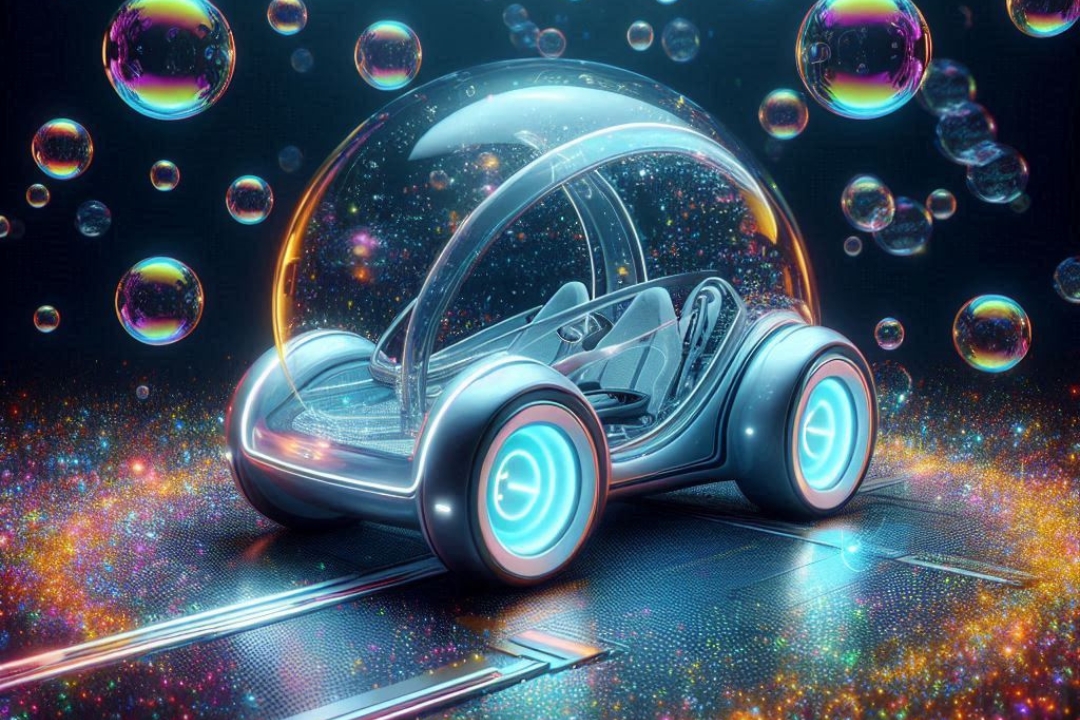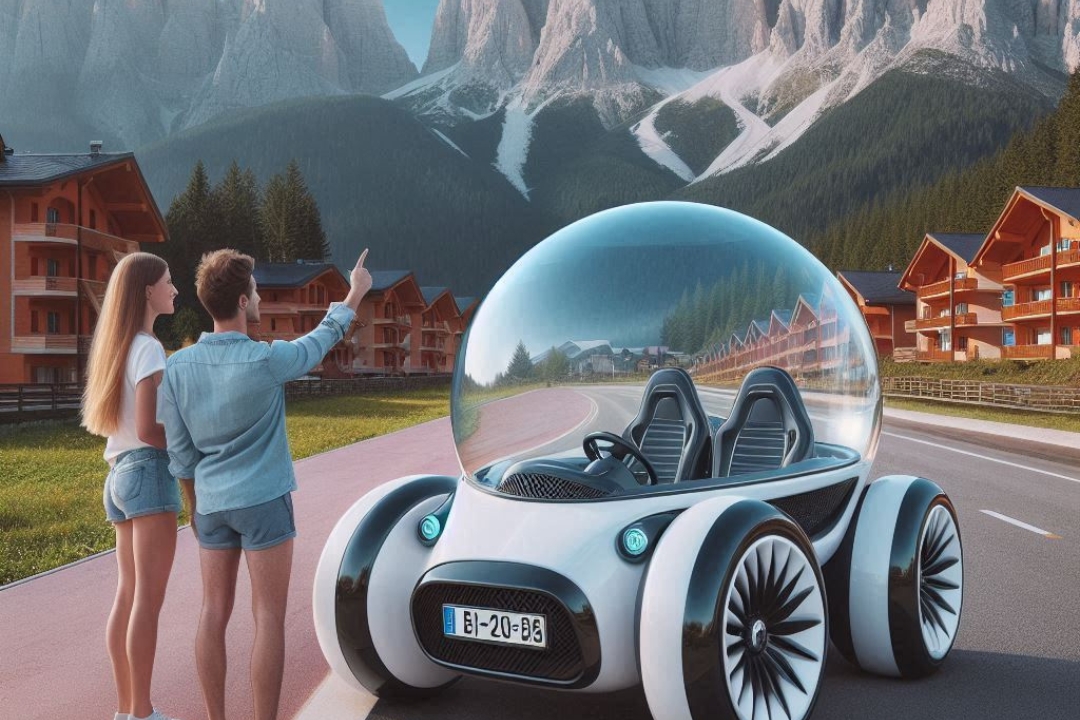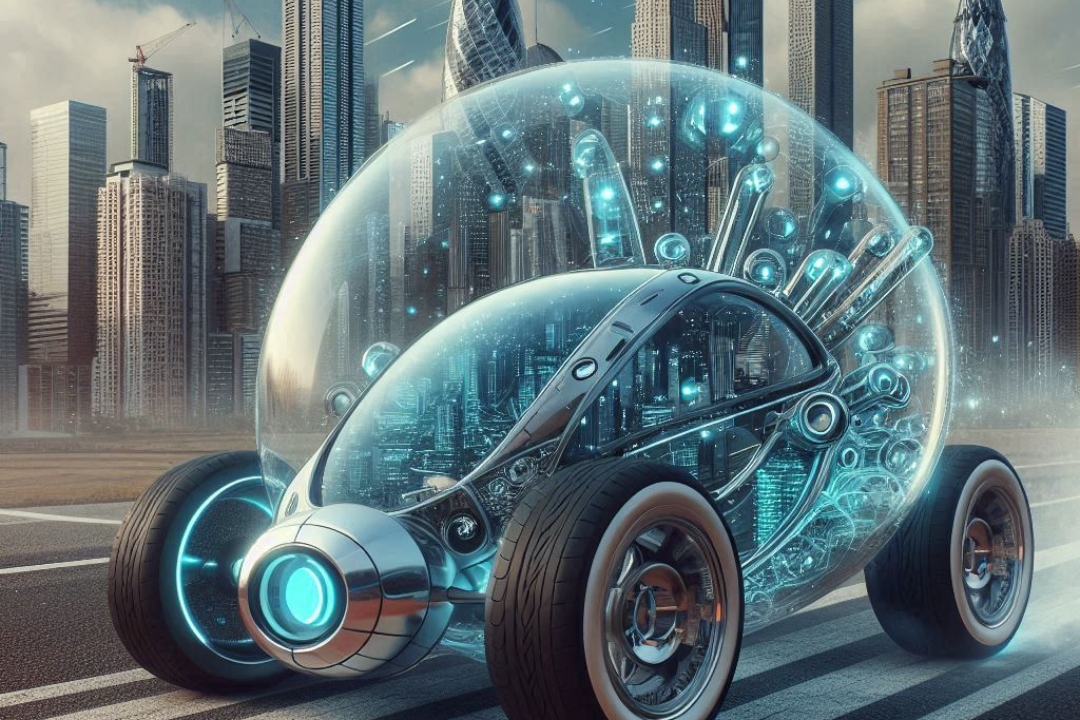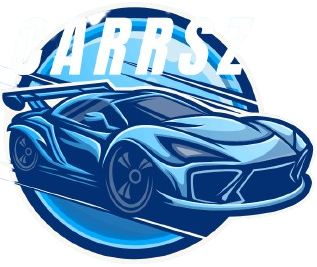Concept and Modern Bubble Cars: Reviving a Classic with a Contemporary Twist
Table of Contents
- Concept and Modern Bubble Cars: Reviving a Classic with a Contemporary Twist
- Reestablishing the Air pocket Vehicle: Present day Understandings
- Thought Vehicles and Future Headways
- Concept and Modern Bubble Cars: A Fusion of Nostalgia and Innovation
- Thought Vehicles: Stretching the Boundaries
- Concept and Modern Bubble Cars: A Deep Dive into the Evolution of Urban Mobility
- Present day Air pocket Vehicles: Solidifying Commendable Arrangement with New Development
Introduction
Bubble cars, those charming microcars of the mid-20th hundred years, are famous for their more modest size, unusual arrangement, and presence of mind. Starting from the post-war time when viability and economy were imperative, these vehicles have since formed into nostalgic images of auto plan. Recently, one more surge of thought and current air pocket vehicles has emerged, blending the commendable dumbfound of their predecessors with cutting edge advancement and achievable practices. This article explores how contemporary plans are reestablishing the air pocket vehicle soul while watching out for current necessities.
The Custom of Air pocket Vehicles
Bubble car, generally called microcars, first procured omnipresence during the 1950s and 1960s. They were planned to be sensible, eco-accommodating, and easy to move in pressed metropolitan circumstances. Commendable models like the BMW Isetta, Messerschmitt KR200, and Citroën 2CV typified this thought with their undeniable, changed shapes and diminished viewpoints.
These vehicles were not just about feel; they addressed a practical response for post-war transportation challenges. Their three-wheeled plan and moderate components made them proficient and open, intriguing to an extensive group. Nevertheless, as vehicle development advanced, the air pocket vehicle period obscured into history, forsaking a nostalgic legacy.
Reestablishing the Air pocket Vehicle: Present day Understandings
Lately, vehicle creators and fashioners have gotten back to the air pocket vehicle thought, planning current development and practicality into their arrangements. These new emphasess mean to regard the allure of model microcars while settling contemporary issues like biological impact and metropolitan blockage.
1. BMW i3
The BMW i3, introduced in 2013, is an ideal portrayal of how current development can revise the air pocket vehicle thought. With its negligible viewpoints and indisputable arrangement, the i3 gives acknowledgment to the excellent BMW Isetta. In any case, the i3 is a totally electric vehicle, arranged considering reasonability. Its usage of reused materials, including carbon fiber and down to earth wood, features BMW’s commitment to eco-obliging collecting. The i3’s cutting edge plan, with its colossal, outward-opening entrances and broad inside, enlists in the commendable air pocket vehicle trendy with contemporary handiness.
2. Keen EQ Forfour
The Splendid EQ Forfour, a state of the art electric vehicle, typifies the air pocket vehicle ethos with an accentuation on metropolitan flexibility. As an all-electric city vehicle, it offers a viable and helpful response for city driving. Its moderate size, versatility, and clever arrangement reflect the primary air pocket vehicle norms, while its electric drivetrain lines up with flow regular concerns. The Forfour arrangement, but more daring than its predecessors, holds an insignificant and simple to utilize character reminiscent of excellent microcars.
3. Renault Twizy
The Renault Twizy tends to areas of strength for a from traditional vehicle plans while embracing the spirit of microcars. With its little impression and couple visitor plan, the Twizy offers a very safe solution for metropolitan vehicle. It’s an electric vehicle with a biggest speed of around 45 km/h (28 mph), making it ideal for city driving. The Twist’s arrangement, including revealed wrangles moderate body, includes a peppy understanding of the air pocket vehicle thought, highlighting presence of mind and silliness.

Thought Vehicles and Future Headways
A couple of makers have in like manner developed thought vehicles that stretch the boundaries of the air pocket vehicle recuperation. These thoughts explore new materials, developments, and plans that could shape the destiny of metropolitan compactness.
1. Toyota I-Road
The Toyota I-Road is a thought vehicle that blends the air pocket vehicle’s diminutiveness in with pattern setting advancement. With its three-wheeled plan and electric powertrain, the I-Road offers a wonderful driving experience. It incorporates an innovative slanting instrument, allowing it to investigate turns with strength. The I-Road’s arrangement stresses efficiency and natural commitment, reflecting Toyota’s vision for future metropolitan vehicle.
2. Honda Little Resident Thought
The Honda Smaller than normal Specialist Thought is another representation of how bubble vehicle principles are being adapted to what’s to come. Arranged as an insignificant, electric vehicle for little outings, the Smaller than usual Resident burdens sound judgment and viability. Its disconnected arrangement thinks about customization, pursuing it an adaptable decision for metropolitan occupants. The thought vehicle’s state of the art appearance and complement on eco-obliging advancement highlight how the air pocket vehicle’s legacy continues to rouse improvement.
Concept and Modern Bubble Cars: A Fusion of Nostalgia and Innovation
Introduction
Bubble car, those whimsical and helpful microcars of the post-war time frame, exemplified when adequacy and sensibility were imperative. Their specific, changed shapes and moderate size made them images of metropolitan convenience. Today, a resurgence of interest in these charming vehicles reflects a greater example of combining commendable arrangement with present day development. Thought and current air pocket vehicles get retro style together with cutting edge degrees of progress, hoping to address contemporary transportation needs while rousing the contemplation of their mid-20th century accomplices.
The Improvement of Air pocket Vehicles
Bubble car emerged in the aftermath of The Subsequent Extraordinary Conflict, a period put aside by a prerequisite for moderate and suitable transportation game plans. Vehicles like the BMW Isetta, Messerschmitt KR200, and Citroën 2CV were expected to be sensible and eco-accommodating, dealing with a general population recovering from wartime inadequacies. These microcars were depicted by their little size, moderate arrangement, and three-wheeled arrangements, making them ideal for stopped up metropolitan areas.
As vehicle development progressed, the air pocket vehicle thought become bothersome, displaced by greater and every one of the more amazing vehicles. Regardless, the core of these vehicles — their minimization, efficiency, and specific arrangement — has remained influential. Recently, the recuperation of air pocket vehicle principles has been driven by a re-energized base on sensibility and metropolitan versatility, inciting the improvement of present day understandings that honor the past while embracing what’s to come.

Current Understandings of Air pocket Vehicles
1. BMW i3: A State of the art Show-stopper
The BMW i3, introduced in 2013, is a quintessential outline of how current development can revamp the air pocket vehicle thought. With its more modest perspectives and obvious arrangement, the i3 motions to the commendable BMW Isetta. Regardless, the i3 isolates itself with a totally electric powertrain, reflecting contemporary stresses over regular impact and reasonability.
The i3 features a lightweight carbon fiber upheld plastic (CFRP) advancement, which further develops efficiency and execution. Inside, the usage of possible materials, for instance, reused plastics and carefully got wood highlights BMW’s commitment to eco-obliging practices. The i3’s arrangement merges tremendous, outward-opening entrances that give basic access in limited spaces, staying aware of the sound judgment that was fundamental to the principal air pocket vehicles.
2. Insightful EQ Forfour: Metropolitan Viability
The Splendid EQ Forfour exemplifies the substance of air pocket vehicles with an accentuation on metropolitan adaptability. This all-electric city vehicle is planned to investigate stopped up streets effectively, offering a diminished effect that makes having and moving in confined spaces simple. Its arrangement incorporates sharp lines and a state of the art smart, reflecting current auto designs while staying aware of the negligible, capable soul of excellent microcars.
The Astute EQ Forfour’s electric drivetrain lines up with contemporary normal targets, diminishing releases and propelling sensibility. The vehicle’s inside is planned for most outrageous handiness, with space-useful seating and a simple to utilize interface that takes unique consideration of city occupants’ prerequisites. The Forfour tends to a state of the art variety of the air pocket vehicle’s principles, offering good judgment and viability in a smooth, contemporary pack.
3. Renault Twizy: An Extraordinary Metropolitan Plan
The Renault Twizy tends to a difficult reconsideration of the air pocket vehicle thought. This very more modest electric vehicle is expected for short metropolitan trips, featuring a couple visitor plan that grants it to consume unimportant road space. With a most extreme speed of around 45 km/h (28 mph), the Twizy is perfect for city driving, offering an energetic and even minded reply for metropolitan vehicle.
The Twizy’s arrangement is capricious, with revealed deals moderate body that highlights its noteworthy individual. Its more modest size and versatility make it fitting for investigating amassed streets and confined parking spaces. The Twizy’s accentuation on viability and silliness reflects a state of the art take on the air pocket vehicle ethos, getting sensibility together with a specific and attracting plan.
Thought Vehicles: Stretching the Boundaries
A couple of thought vehicles have examined new orientation for the air pocket vehicle recuperation, stretching the boundaries of plan and development.
1. Toyota I-Road: The Slanting Microcar
The Toyota I-Road is a thought vehicle that associations bubble car guidelines with pattern setting development. Featuring a three-wheeled plan and electric powertrain, the I-Road solidifies a slanting part that overhauls unfaltering quality and versatility. This imaginative component allows the vehicle to investigate turns easily, making it proper for metropolitan circumstances.
The I-Road’s arrangement highlights efficiency and normal commitment, with a more modest construction that limits road space use. Its cutting edge appearance and state of the art development show off Toyota’s vision for the inevitable destiny of metropolitan transportability, blending the boggle of model microcars with best in class headways.
2. Honda Smaller than usual Laborer Thought: Estimated and Versatile
The Honda Smaller than usual Resident Thought is an earth shattering method for managing the air pocket vehicle recuperation. Arranged as a limited electric vehicle for short drives, the Smaller than usual Laborer incorporates a deliberate arrangement that thinks about customization considering client needs. This adaptability settles on it a practical decision for metropolitan circumstances, where space and efficiency are head.
The thought vehicle’s arrangement reflects a blend of sound judgment and present day feel, with an accentuation on extending inside space and helpfulness. Its electric powertrain lines up with stream normal goals, making it a fitting delineation of how bubble car guidelines can be changed in accordance with contemporary transportation needs.

Concept and Modern Bubble Cars: A Deep Dive into the Evolution of Urban Mobility
Introduction
Bubble car, those little, charming vehicles from the mid-20th 100 years, were some different option from a specific response for post-war transportation needs — they were an impression of an overall population restless to embrace capability and presence of mind. Their resurgence of late is a showing of their driving forward through guarantee and how their arrangement principles continue to influence present day auto improvement. This article examines the progression of air pocket vehicles into their contemporary and sensible designs, showing how they address the current metropolitan and regular hardships while holding their model allure.
The Tradition of Air pocket Vehicles
The maxim “bubble vehicle” suggests a grouping of microcars advanced in Europe during the 1950s and 1960s. These vehicles were expected to be pragmatic, easy to leave, and accessible to the larger part. Their limited arrangement, as often as possible portrayed by a changed, bubble-like shape, made them a sensible response for amassed metropolitan circumstances. Praiseworthy models like the BMW Isetta, Messerschmitt KR200, and Citroën 2CV were adulated for their inventive method for managing restricted scope individual vehicle.
BMW Isetta: Known for its single front doorway and more modest perspectives, the Isetta was a picture of efficiency. Its reasonable arrangement and little impression made it ideal for metropolitan driving, and it became one of the most undeniable air pocket vehicles of this present time is the perfect open door.
Messerschmitt KR200: This vehicle incorporated a specific air pocket conceal and a three-wheeled plan, offering a stand-out and practical solution for post-war transportation. Its imaginative arrangement and value made it a boss in the microcar class.
Citroën 2CV: But possibly greater than typical air pocket vehicles, the 2CV’s essential arrangement and emphasis on sensibility exemplified the spirit of microcars. Its representing trustworthiness and viability went with it a dearest choice for some.
Present day Air pocket Vehicles: Solidifying Commendable Arrangement with New Development
1. BMW i3: The Eco-Obliging Masterpiece
The BMW i3 is a close relative of the principal BMW Isetta, reflecting its spirit through current advancement. Introduced in 2013, the i3 is an all-electric vehicle expected to resolve contemporary issues for practicality and metropolitan flexibility.
Plan: The i3 holds a limited design reminiscent of the Isetta, with a state of the art twist. Its lightweight carbon fiber upheld plastic (CFRP) advancement updates execution and efficiency, while its specific arrangement — featuring immense, outward-opening doorways — gives legitimate regard to the principal air pocket vehicle classy.
Development: The i3’s electric drivetrain offers a viable choice as opposed to standard internal combustion engines, with an accentuation on decreasing releases and further creating eco-kind disposition. Its use of reused materials and significant level collecting systems lines up with current biological targets.
2. Wise EQ Forfour: Metropolitan Capability Reconsidered
The Wise EQ Forfour is a contemporary reconsideration of the air pocket vehicle thought, expected for metropolitan capability and practicality.
Plan: With its more modest viewpoints, the Forfour is perfect for investigating city streets. Its front line, exact arrangement wanders from the praiseworthy air pocket shape anyway holds the principal ascribes of sensibility and portability.
Advancement: As an all-electric vehicle, the Forfour will in general stream regular concerns while offering a response for metropolitan stop up. Its electric powertrain diminishes surges and advances useful metropolitan vehicle, making it a fitting substitution to the air pocket vehicle legacy.
3. Renault Twizy: A Silliness and Helpful Microcar
The Renault Twizy tends to a serious departure from traditional vehicle plans while staying predictable with the microcar thought.
Plan: The Twizy’s really limited size and couple visitor plan reflect a carefree method for managing metropolitan flexibility. Its open arrangement and moderate body include its unique individual, going with it a helpful and fun decision for short city trips.
Development: With a most extreme speed of around 45 km/h (28 mph) and an electric drivetrain, the Twizy is planned for short drives and metropolitan circumstances. Its accentuation on viability and silliness lines up with the spirit of model air pocket vehicles, offering a state of the art turn on the primary thought.
Thought Vehicles: Leading the Inevitable destiny of Metropolitan Compactness
Thought vehicles give a short investigate the destiny of auto design, researching new developments and contemplations that could shape the exceptional period of vehicles.
1. Toyota I-Road: Slanting and Electric
The Toyota I-Road is a thought vehicle that unites the air pocket vehicle’s conservativeness with pattern setting development.
Plan: The I-Road incorporates a three-wheeled plan and a stand-out slanting framework that overhauls unfaltering quality and versatility. Its more modest construction and present day appearance reflect a fantasy of metropolitan convenientce that blends commendable microcar guidelines with creative development.
Advancement: As an electric vehicle, the I-Road complements efficiency and natural commitment. Its general slanting system licenses it to investigate turns easily, making it a sensible solution for city driving.
2. Honda Little Resident Thought: Segregated and Adaptable
The Honda Little Resident Thought tends to a pivotal method for managing metropolitan vehicle, focusing in on adaptability and customization.
Plan: The Small scale Resident’s detached arrangement considers customization considering client needs, going with it a sensible decision for different metropolitan circumstances. Its more modest size and capable usage of room reflect the guidelines of commendable microcars.
Development: With an electric powertrain and an accentuation on short drives, the Smaller than normal Specialist lines up with contemporary natural goals. Its arrangement and development show off how bubble vehicle principles can be acclimated to current transportation needs.

The Impact of Present day Air pocket Vehicles
Present day and thought bubble vehicles generally influence the auto business and metropolitan vehicle. By joining the interest of excellent microcars with new progressions and reasonability practices, these vehicles offer imaginative solutions for current transportation challenges.
1. Normal Benefits: The shift towards electric drivetrains and possible materials in present day bubble vehicles reflects a creating commitment to lessening outpourings and progressing eco-obliging practices.
2. Metropolitan Compactness: The negligible size and portability of these vehicles make them ideal for investigating amassed city streets and settling issues of metropolitan blockage.
3. Plan Headway: Present day interpretations of air pocket vehicles show the way that model arrangement principles can be rethought with new developments, giving new perspectives on utilitarian and in vogue metropolitan vehicle.
Conclusion
Thought and current air pocket vehicles address an enchanting intermixing of nostalgia and improvement. By getting back to the guidelines of the commendable microcars and integrating them with contemporary development and plan, these vehicles offer a short investigate the destiny of metropolitan movability. Whether through electric drivetrains, specific plans, or state of the art advancements, the spirit of the air pocket vehicle continues to move and effect the auto business. As metropolitan networks create and transportation needs change, these state of the art interpretations ensure that the custom of the air pocket vehicle stays energetic and significant, planning for an extra down to earth and compelling future.
